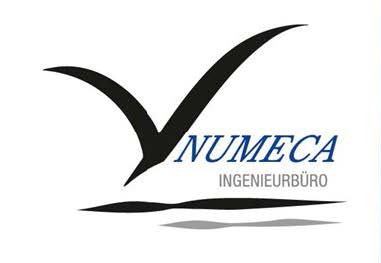Increasing the Performance of Industrial Blowers with NUMECA Optimisation Solutions
Optimisation | Blower | Industrial Equipment
Petrochemical and other industrial applications rely on fans for a series of gas handling processes – which can range anywhere from ambient air ventilation to harmful chloride gases above 500C. The maximum operation speed of these fans is governed and often limited by industry standards. This speed limitation forces fan manufacturers to size the diameter of the impeller up or down in order to obtain the desired pressure output. The challenge for engineers is that the resulting design can become oversized, heavy, and expensive to fabricate, test and transport.
Illinois Blower, based in Cary, Illinois, has been working with NUMECA on a design approach that solves this dilemma by achieving higher pressures and increased fan efficiency, yet maintaining impeller speed and diameter. For more than 40 years, Illinois Blower has successfully developed and built custom centrifugal fans and blowers for a variety of worldwide industrial process industries, including refinery and petrochemical power generation, pollution control, pharmaceutical, food processing, and many others.
The goal of this particular case was to increase the pressure ratio of a complete fan stage (wheel and volute) over its entire performance line. Due to manufacturing constraints, the solid body thickness around the impeller had to be maintained, and the blade shape needed to be easy to manufacture. In addition to this impeller optimisation, the engineers wanted to get a better understanding of the flow physics to help reduce pressure losses in the outlet pipe.
Methodology
The first series of simulations were run from choke to stall in FINE™/Open, NUMECA’s unstructured multi-purpose CFD solver package, and the results were compared with experimental data to assure that the CFD settings were reliable.
High-speed meshing
A 7.5M-point mesh with smooth boundary layers in the volute and around the impeller blade details was generated in Hexpress™. Only one passage of the impeller had to be meshed in order to run the performance line steady calculations, and each computation took less than 1 hour on 96 cores to achieve full convergence.
Optimisation Part 1: Identifying the Main Performance Parameters
The first step of the optimisation was to identify the main factors influencing the centrifugal fan’s performance, in order to know exactly where optimisation would be most effective. Twenty user-defined parameters of the impeller blade and flow channel were carefully selected, describing the hub and shroud shapes; the blade metal angles; and the blade camber and lean. The choice of these free parameters and associated variation ranges turned out to be key for the success of the project. For each set of the parameters, a new geometry was created by FINE™/Design3D, and an unstructured mesh was automatically generated in OMNIS™/Hexpress, using a dedicated python script to save time. After parameterization, the design of experiments (DOE) database was generated by FINE™/Design3D with the Minamo module. The main optimisation algorithm of the Minamo datamining tool is based on evolutionary algorithms, accelerated by the use of surrogate models to speed up the convergence rate. A database of 70 samples was built, filling the design space with 210 CFD solutions at three operating conditions (at stall, near design point, and at choke). By applying the grid-to-grid interpolation to improve the initialization of each CFD sample, a 25% reduction of iterations (and therefore CPU time) was achieved.
A thorough analysis of the database allowed the engineering team to understand the influence of each of the free parameters and their impact on the performance. It was found that the volute was the main limiter in the optimisation of the fan performance! Ensuing work decoupled the components to further optimize the impeller separately and to design a new volute that minimizes the pressure losses observed in the sample CFD solutions.
Optimisation Part 2: Focus on the Impeller
The second part of the performance optimisation focused on the impeller blade, meridional effects, and corresponding solid walls, decoupled from the volute. Using Autogrid™ and FINE™/Turbo, the large database and optimisation can easily be run over a weekend on a desktop machine, and the process is also fully automated by python scripts. Once a new optimal impeller was obtained, the performance of the entire fan was then computed by coupling the detailed geometry of the optimal impeller with the redesigned volute.
Conclusion
Challenge completed. Thanks to this two-part optimisation project, Illinois Blower managed to increase fan performance by up to 44% overall, while maintaining their original design constraints. The optimisation of the impeller blade shape and flow channel led to an increase of static pressure of up to 20% at some operating points (near choke). Furthermore, thanks to a better understanding of the flow-induced pressure losses downstream of the volute scroll, a smart redesign of the volute led to an additional increase in pressure over the whole performance line, going up to 24% at some operating points (near choke).
Author
- Dr Edward De Jesús Rivera, Engineering Manager, Illinois Blower, Inc.
- Fanny Besem-Cordova, Application & Consulting Engineer, NUMECA-USA
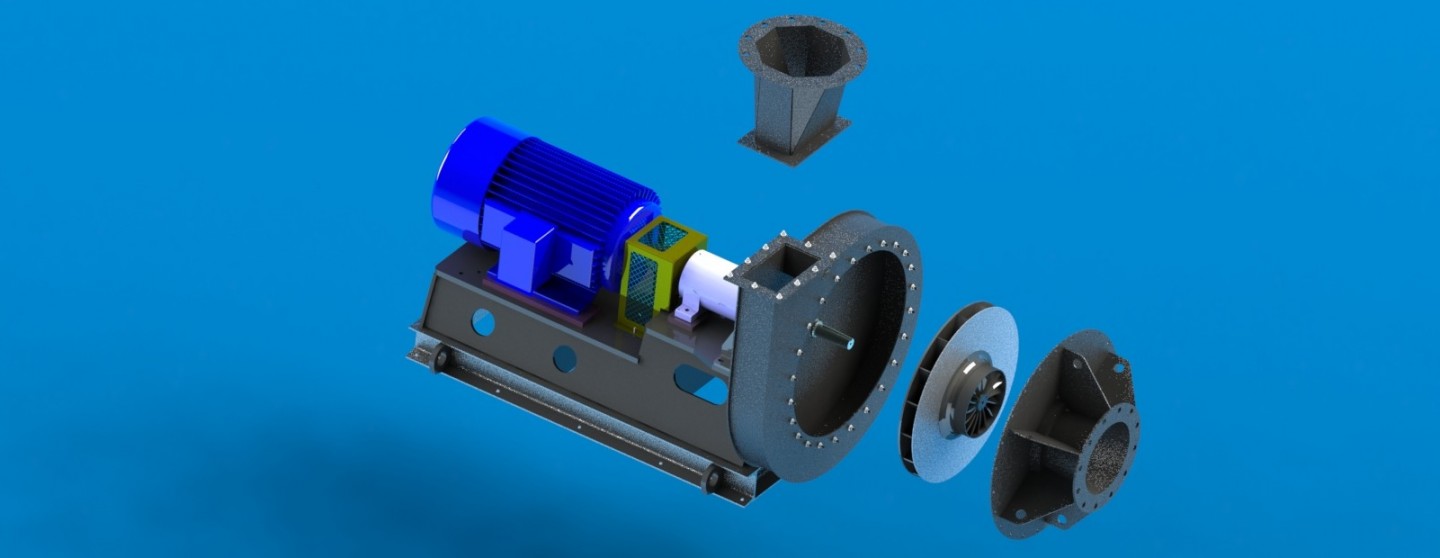 Industrial Blowers Optimisation
Industrial Blowers Optimisation  FIGURE 1 Test Case Impeller And Volute Of The Centrifugal Industrial Fan To Optimise With The Surface Mesh From Hexpress
FIGURE 1 Test Case Impeller And Volute Of The Centrifugal Industrial Fan To Optimise With The Surface Mesh From Hexpress 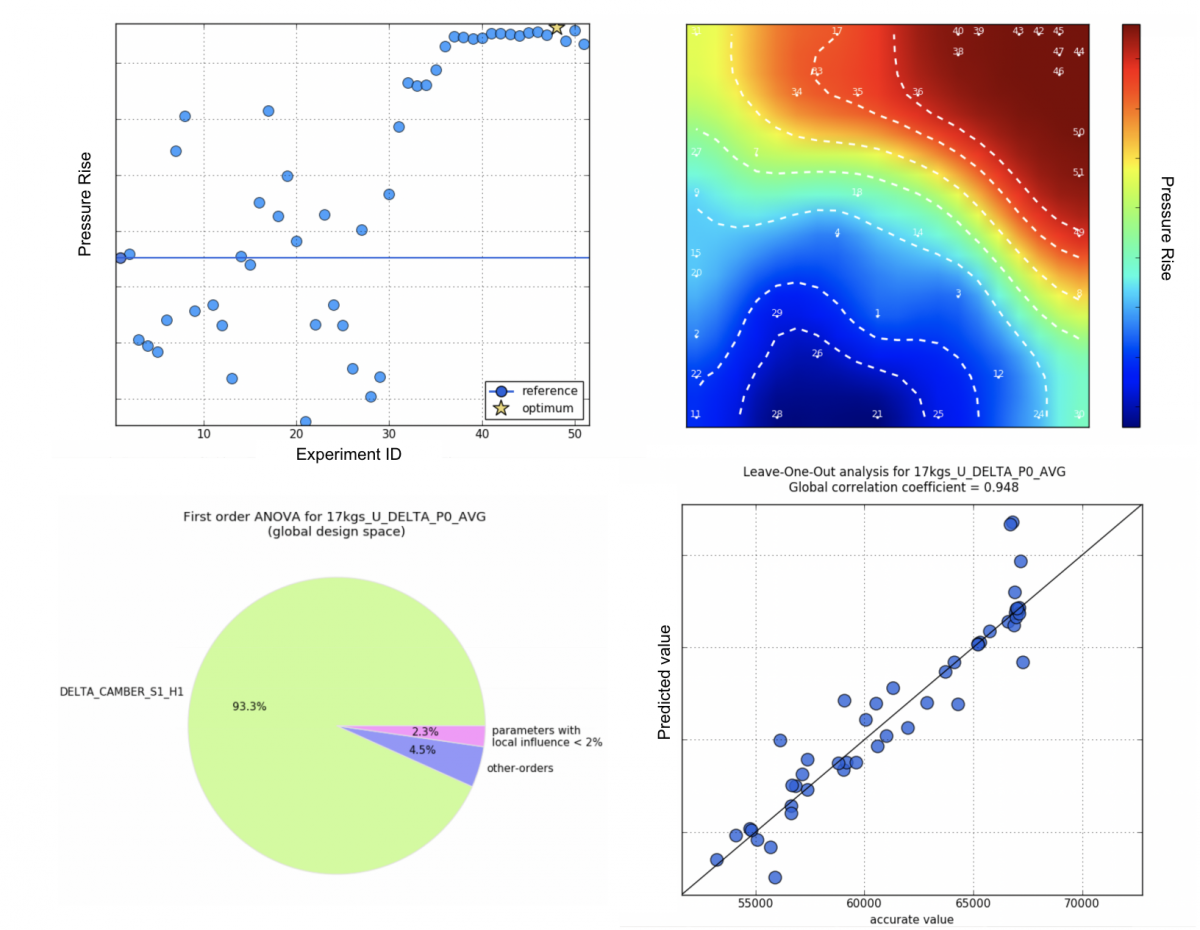 FIGURE 2 : From left to right, top to bottom: The scatter plot shows the value of an objective for all the database and optimization samples, with the optimum individual highlighted by a star. The self-organizing map reveals correlation and anti-correlation between parameters. The analysis of variance (ANOVA) decomposes the global variability of an output over a range of input variables. The Leave-One-Out (LOO) plot estimates the model reliability.
FIGURE 2 : From left to right, top to bottom: The scatter plot shows the value of an objective for all the database and optimization samples, with the optimum individual highlighted by a star. The self-organizing map reveals correlation and anti-correlation between parameters. The analysis of variance (ANOVA) decomposes the global variability of an output over a range of input variables. The Leave-One-Out (LOO) plot estimates the model reliability. 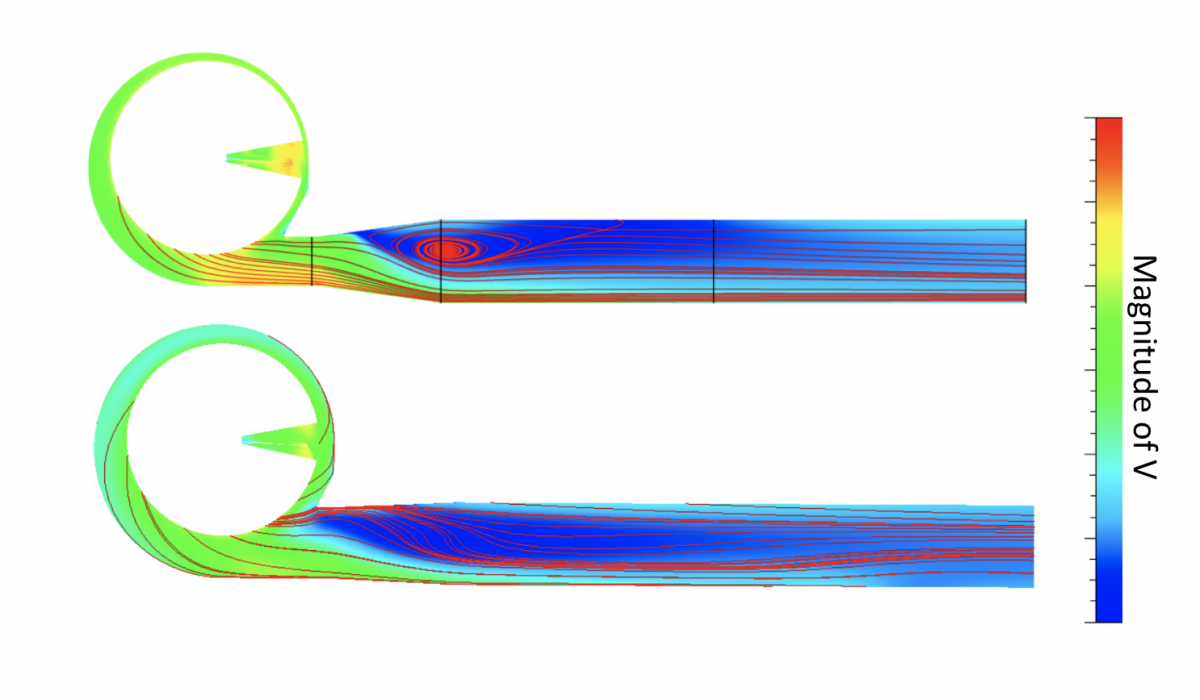 FIGURE 3 : Comparison of the velocity streamlines and contours of velocity magnitude before and after volute redesign for one operating point.
FIGURE 3 : Comparison of the velocity streamlines and contours of velocity magnitude before and after volute redesign for one operating point. 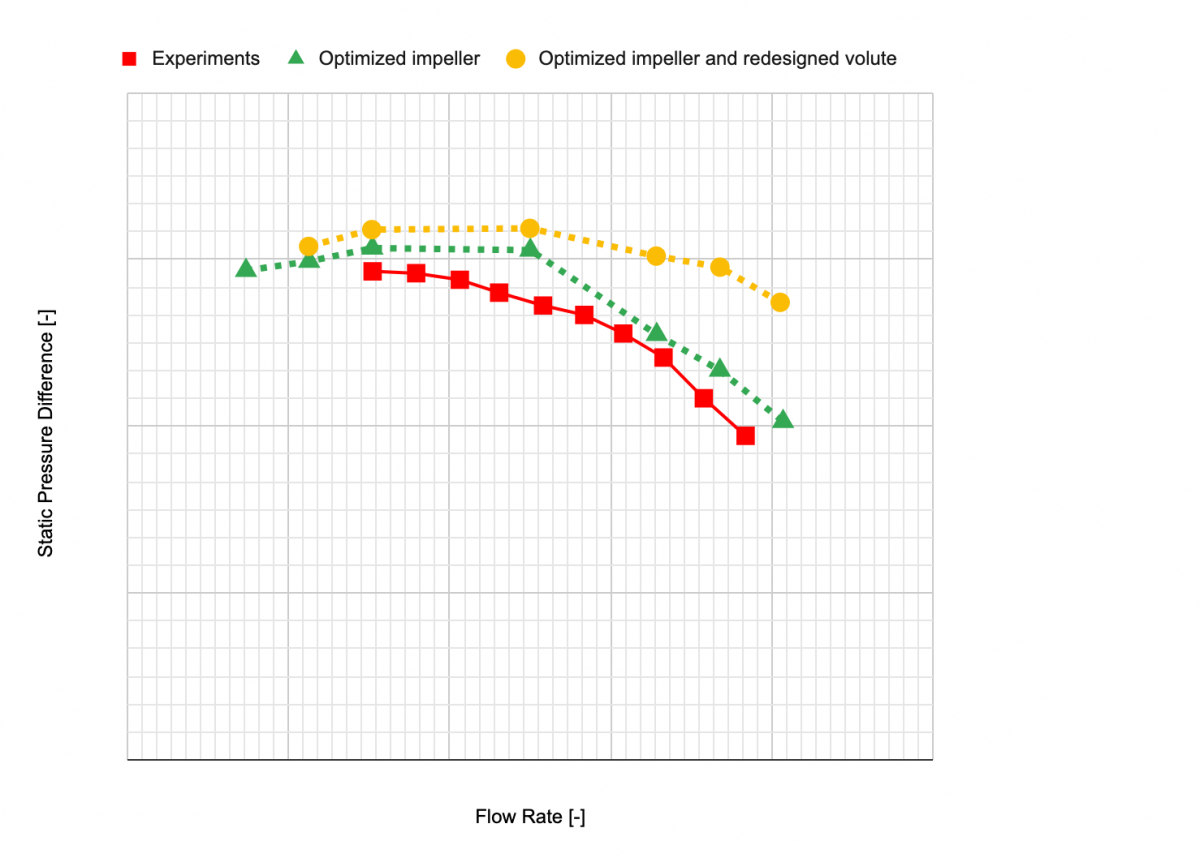 FIGURE 4 : Static pressure difference for the baseline test data and the optimized CFD designs (values are removed for proprietary reasons).
FIGURE 4 : Static pressure difference for the baseline test data and the optimized CFD designs (values are removed for proprietary reasons). 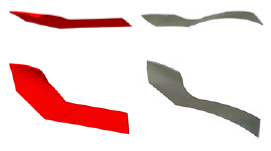 FIGURE 5: Comparison Of The Impeller Blade Shape Before Optimization (in Red) And After Optimization (in Grey).
FIGURE 5: Comparison Of The Impeller Blade Shape Before Optimization (in Red) And After Optimization (in Grey). 